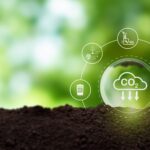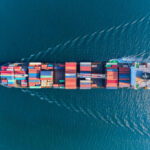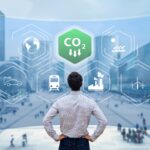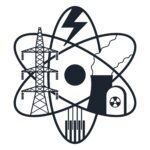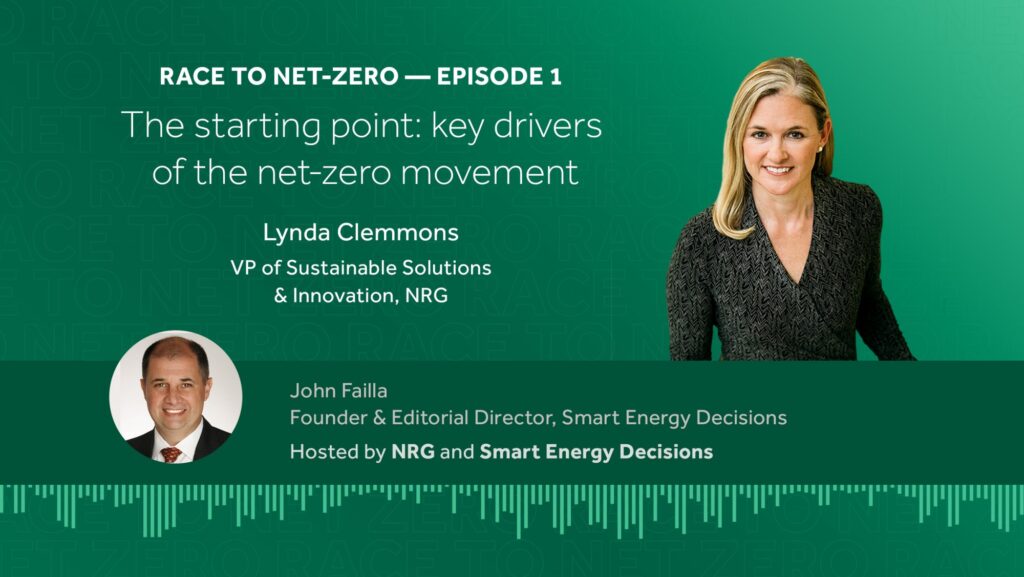

This episode is made in partnership with NRG Energy.
NRG Energy and Smart Energy Decisions are pleased to bring you a new educational project, The Race to Net Zero podcast, a six-episode series centered around the journey to net-zero for businesses like yours. This premiere episode features host John Failla from Smart Energy Decision and Lynda Clemmons, Vice President of Sustainable Solutions at NRG Energy.
You will want to hear this episode if you are interested in…
- Lynda’s current role at NRG [01:20]
- Trends in emission reduction strategies [03:12]
- International influences [09:25]
- Formalizing reporting [15:19]
- Setting measurable goals [20:44]
- The future of net-zero [26:28]
The change in energy markets
Several factors have increased efficiency including companies’ focus on improvements through production and investment tax credits as well as market mechanisms. In the year 2000, wind towers were roughly 0.75 MW in size. Now, the standard install is 2.5 MW per hub, which is a tremendous increase. Similarly, solar efficiency has increased significantly over the past 20 years, reaching a point today where a residential application of panels is as much as 410 to 450 MW.
There have been incredible efficiency gains with predictions for more progress to come. In 2015, solar efficiency was around 18% and that number has grown to approximately 23%. New technologies are on the cusp of being developed that could see 30% or 40% efficiency, which would make a tremendous difference in the applicability of solar and a company’s ability to make those installations happen.
Key international influences
At the UN conference where the Paris Agreement took place, corporations shifted perspective and started to understand what their impact on emissions reduction could be. Small island nations were vocally represented and were determining what their heavy emitters are and how they could engage in the worldwide emissions reduction movement. The marches that took place during the meeting stressed how an increase in warming could potentially drown the small island nations due to the rise in sea level.
A conversation about current economics can’t happen without considering the events in Ukraine. The war has highly impacted oil, natural gas, coal, and their associated usage. Governments in the UK and Europe are concerned about pricing, especially for natural gas. This global unrest has brought to light the fragility of the energy market.
Measurable goals
Accurately setting and achieving climate goals requires accurate measurements. An initial inventory of emissions helps an organization understand what realizing climate goals means. As companies try to determine their own emissions metrics and how to set goals around those measurements, they need to look at all scopes together. Supply chains may overlap in some places, and companies could be forced to double- or triple-count some metrics. A straightforward solution to every concern isn’t available yet, but progress needs to start somewhere.
Sustainability tactics will be unique for every company, as well as decisions about who needs to be involved internally and externally. A sustainability team plays a significant role in helping the rest of the organization interpret data accurately, continue pushing forward to meet goals, and pursue sustainable design. Incorporating all the increased efficiencies in renewable energy, carbon capture, and potential reuse has tremendous possibilities for companies working towards a sustainable future.
Resources and People Mentioned
Connect with Lynda Clemmons
Connect with NRG Energy
- https://www.nrg.com/
- Follow them on Facebook
- Follow them on Twitter
- Follow them on LinkedIn
Connect With Smart Energy Decisions
- www.smartenergydecisions.com
- Follow them on Facebook
- Follow them on Twitter
- Follow them on LinkedIn
